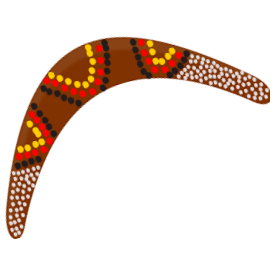Aboriginal and Torres Strait Islander Leadership – Abolish The Myths
By Wendy Ittensohn 2014
It’s surprising just how many wildly inaccurate myths there are surrounding the First Nations peoples and the subject of leadership.
Strangely, some of these were presumably well intentioned in origin but even so, they have no place in the modern world.
Here we will take a look at two of the more commonplace ones and state the accurate reality.
“The Aboriginal and Torres Islander peoples have common leadership needs”
In one sense, it is difficult to argue with aspects of that sentiment.
The experience of all the Aboriginal peoples, after the arrival of European settlers, has certain common themes including things such as subjugation and disregard. These need to be addressed in any Aboriginal and Torres Strait Islander leadership program.
However, that can’t be taken too far.
Firstly, it needs to be remembered that there are historic and cultural differences between many of the communities that are now described as being ‘First Nations’ peoples. It is potentially dangerous to start even a well intentioned discussion with sentiment such as “All Aboriginals” for the same reasons that would be when saying “All Europeans” or “All Chinese” etc.
Different regional and cultural legacies make such crude categorisations usually somewhat less than meaningful as the starting point for any development assumptions.
Secondly and more importantly, the members of these communities are individuals. Like all individuals all over the world, their needs in terms of personal development will vary from one to another.
It makes no more sense to assume that all Aboriginal people have the same leadership development needs than it would to say that about all German, Italian or British people.
It is important to see the members of these communities as having individual needs within a general cultural awareness framework rather than in terms of “All Aboriginals need… ”
“Tribal leaders need more leadership training”
This is a fundamental misconception of the nature of both modern-day leadership and the Aboriginal peoples.
From the date of the arrival of the First Fleet from Britain in the 18th century, the peoples of the First Nations were categorised and understood (that is where any attempt to even do so was undertaken) in the context of often wildly inappropriate European social structures and conceptual models.
This led to a mass of typically inapplicable terms being used to try and understand their societies, including imposing British and European notions of ‘the tribe’.
In fact, the typical relationship between the family, the wider community and the land, was much more complicated than anything the Europeans had seen previously.
These misunderstandings about the nature of Aboriginal communities have been perpetuated down to the relatively recent past in the perceptions of the majority population.
In fact, Aboriginal and Torres Strait Islander leadership programs are much more about developing inspirational behaviours in individuals for the benefit of the wider group or community than necessarily about developing command-and-control figures of authority of such as ‘bosses’ or ‘head honchos’ etc.
Traditional aboriginal societies always valued that type of 360 degree inspirational leadership rather than top-down hierarchies.
It’s ironic that moderate leadership development programs and the western world are now starting to deemphasize leadership in terms of control and instead to look towards such matrix leadership target structures. In that sense, they perhaps have much to learn from Aboriginal and Torres Islander leadership programs down under!
Article Source: https://EzineArticles.com/expert/Wendy_Ittensohn/1709340

